Looking at the hands
Look carefully at the hands. Inspect both the dorsal and the palmar surfaces.
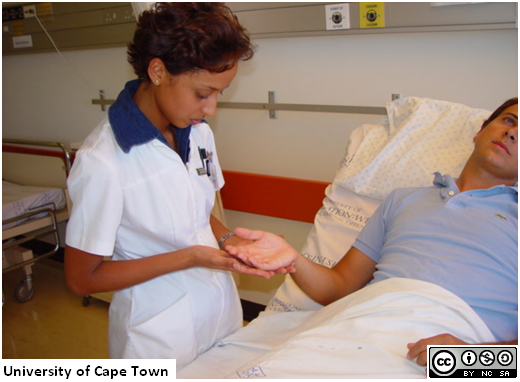
| AFRIKAANS | TRANSCRIPT | XHOSA |
|---|---|---|
| May I look at your hands please? / Mag ek asseblief u hande ondersoek? / Ndingajonga izandla zakho? | ||
| What is this mark/scar/lump? / Wat is hierdie merk/letsel/ knop? / Ngumkrwelo wantoni lo? | ||
| What happened here? / Wat het hier gebeur? / Utheni apha? | ||
| Other hand please. / Gee vir my u ander hand, asseblief. / Khawundiphe esinye isandla |
Support the hand as shown while you inspect the palmar aspect. Then turn the hand over and look at the dorsal aspect. In the next slide you will be reminded of some of the more common abnormalities.
Read about these in textbooks and make sure you understand their significance.
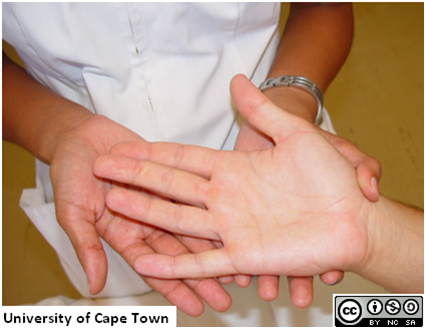
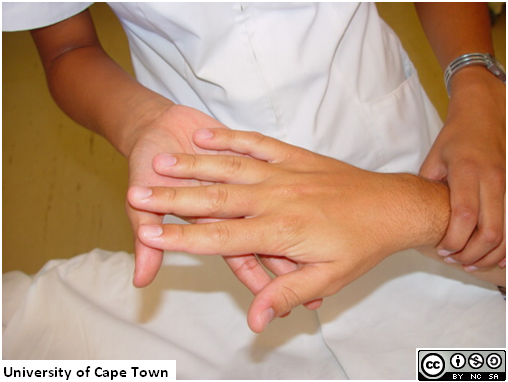
| AFRIKAANS | TRANSCRIPT | XHOSA |
|---|---|---|
| Thank you, please turn your hand over. / Dankie, draai asseblief u hand om. / Enkosi ndicela uguqule isandla | ||
| Your other hand please. Thank you. / U ander hand asseblief. Dankie. / Nesinye ke. |
Palmar surface
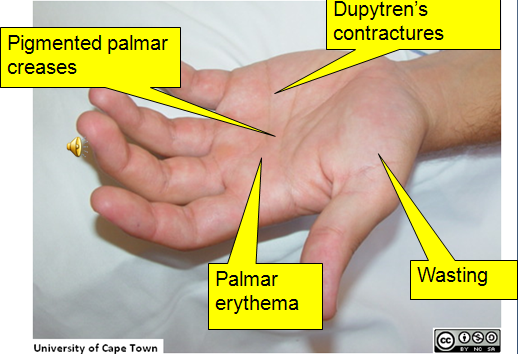
| AFRIKAANS | TRANSCRIPT | XHOSA |
|---|---|---|
| Any one else in your family have this? / Dankie, draai asseblief u hand om. / Ukhona omnye umntu efemelini yakho onezi zinto? |
Dorsal surface
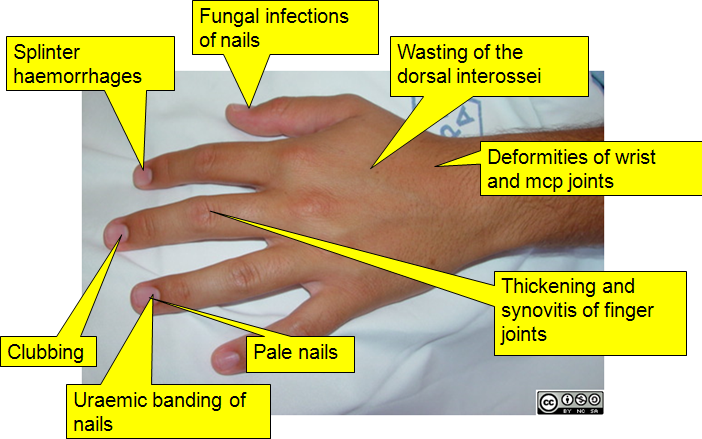
Clubbing is an important sign in the fingers. The following simple technique will enable you to recognise clubbing.
Hold the finger horizontally, and inspect it carefully from the side.
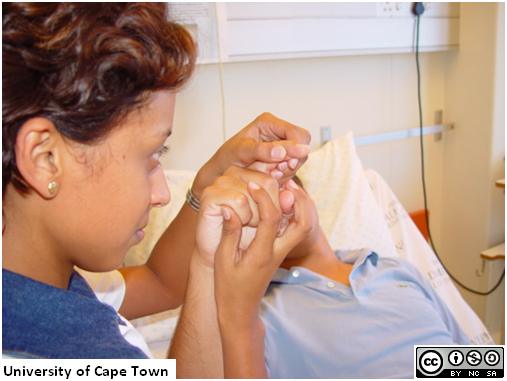
| AFRIKAANS | TRANSCRIPT | XHOSA |
|---|---|---|
| Does anyone in your family have nails like this? / Lyk enigiemand anders in u familie se naels ook so? /Ukhona omnye umntu efemelini yakho oneenzipho ezinje? | ||
| I need to look at your nails more closely. / Ek moet u naels van nader bekyk. / Ndicela ukujonga iinzipho zakho kakuhle. |
The examiner is looking at the finger nail side-on.
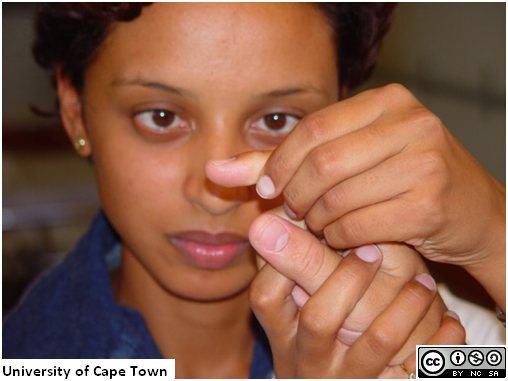
| AFRIKAANS | TRANSCRIPT | XHOSA |
|---|---|---|
| That looks fine. / Alles lyk reg. / Yonke into ibonakala ilungile. | ||
| I need to look at all your fingers. / Ek moet al u vingers ondersoek. / Ngoku ndicela ukujonga yonke iminwe yakho. | ||
| OK? / Is dit reg met u? / Kulungile? |
See how, in a normal finger, the nail plate (the hard part of the nail)?
Makes an acute angle with the nail fold (the soft part of the finger just above the root of the nail).
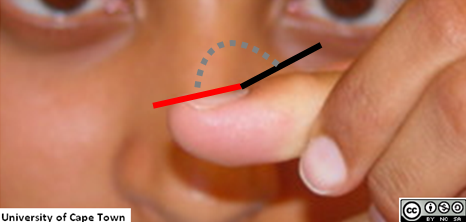
In clubbing, there is an overgrowth of soft tissue below the bed of the nail. This pushes upward, lifting the base of the nail.
Therefore, this normal angle is lost, and eventually becomes obtuse.
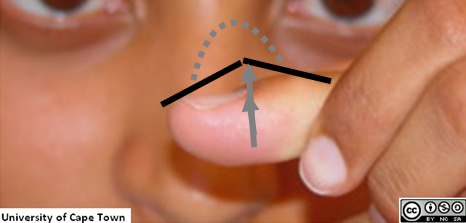
Having identified possible clubbing by inspection of the nail angle, confirm it by palpation. Place each of your thumbs on the sides of the nail just over the nail fold as shown.
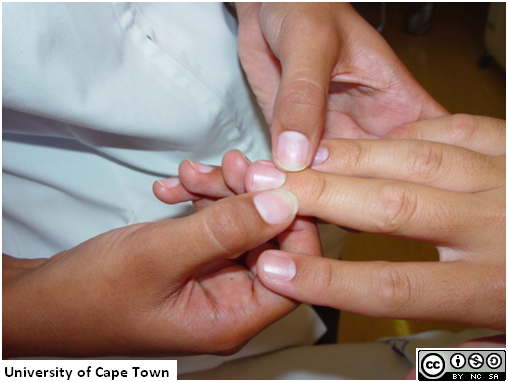
Rock the nail from the side by alternately pressing and releasing each thumb. In the presence of clubbing, there will be an abnormally free rocking movement of the nail plate, denoting ?sponginess? of the nail bed.
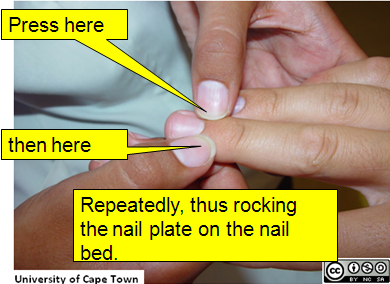
Watch how this is done.
